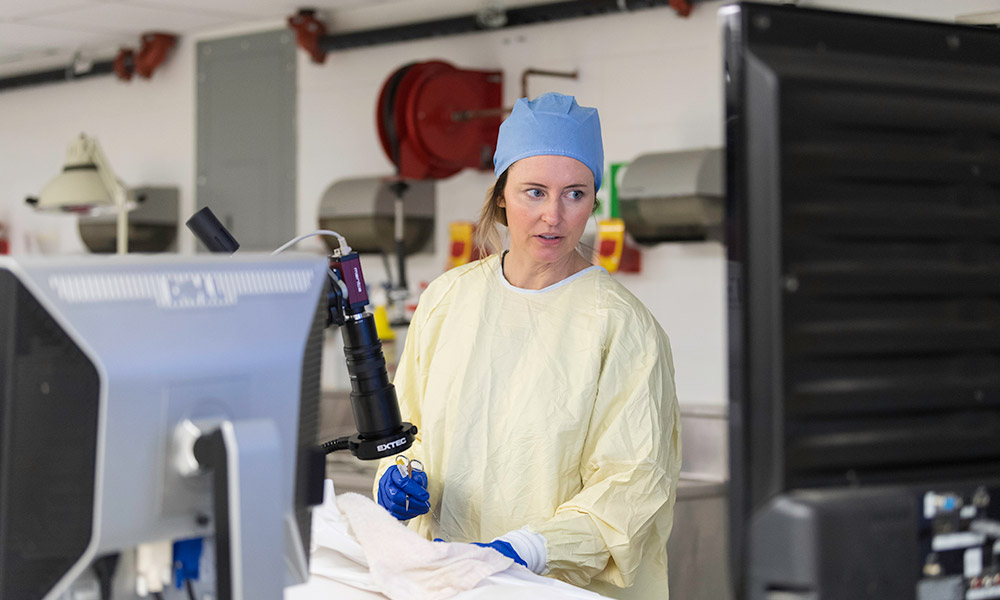Pioneer of freeform optics is also an expert in head-worn displays and biomedical imaging.
Jannick Rolland, the director of the Center for Freeform Optics at the University of Rochester, holds more than 50 patents and is considered a pioneer in optical applications in augmented and virtual reality.
The Brian J. Thompson Professor of Optical Engineering is now the fourth University faculty member to be named a Fellow of the National Academy of Inventors (NAI). The program highlights academic inventors whose work has made a tangible impact on quality of life, economic development, and the welfare of society. A total of 175 inventors, representing 115 research universities and governmental and non-profit research institutes worldwide, are being recognized this year.
“Jannick is the epitome of the inventor,” says Scott Carney, director of the Institute of Optics. “Her research has opened new vistas in imaging and free form optical design. She has brought her ideas to market through her entrepreneurial efforts. Graduates from her group lead the field and credit Jannick’s mentorship for their success.”
The Center for Freeform Optics is a federally supported collaboration involving Rochester, the University of North Carolina at Charlotte, and 28 companies and research institutes. The goal is to advance an emerging technology that uses lenses and mirrors with freeform surfaces to create optical devices that are lighter, more compact, and more effective than ever before.
“Freeform optics is poised to permeate all precision technologies of the future, and perhaps a lot sooner than we ever anticipated,” Rolland says.
With her former PhD student Cristina Canavesi, Rolland is also cofounder and chief technology officer of LightopTech, a startup commercializing one of Rolland’s inventions. The portable device uses a microscope with a liquid lens to image cells just below the surface of the skin, cornea, and other tissues. Among many possible applications, the device is targeted to help surgeons determine if they’ve successfully removed all of a skin cancer, without having to wait for the results of a traditional biopsy.
Rolland, who also directs the University’s R.E. Hopkins Center for Optical Design & Engineering, has over 180 peer-reviewed publications related to optical design and metrology.
Previous University of Rochester faculty members chosen as fellows of the National Academy of Inventors are Kevin Parker, the William F. May Professor and dean emeritus of engineering; Wayne Knox, professor of optics, and James Zavislan, associate professor of optics.
Read more
 Women of invention: How Rochester women find success as patent-holders
Women of invention: How Rochester women find success as patent-holdersThey create novel devices and develop new technologies with global impact. The University of Rochester ranks fourth among US universities in its percentage of international patent holders who are women. What brought these women to the University–and what enables them to thrive?

Ching Tang inducted into National Inventors Hall of Fame
Ching Tang is being recognized for his part in helping pioneer development of the organic light-emitting diode, or OLED, found in today’s flat panel displays in computers, cell phones, and televisions.

University again ranks among the top 100 worldwide for US utility patents
Rochester jumped three spots to number 61 on this year’s top 100 rankings from the National Academy of Inventors and the Intellectual Property Owners Association.


